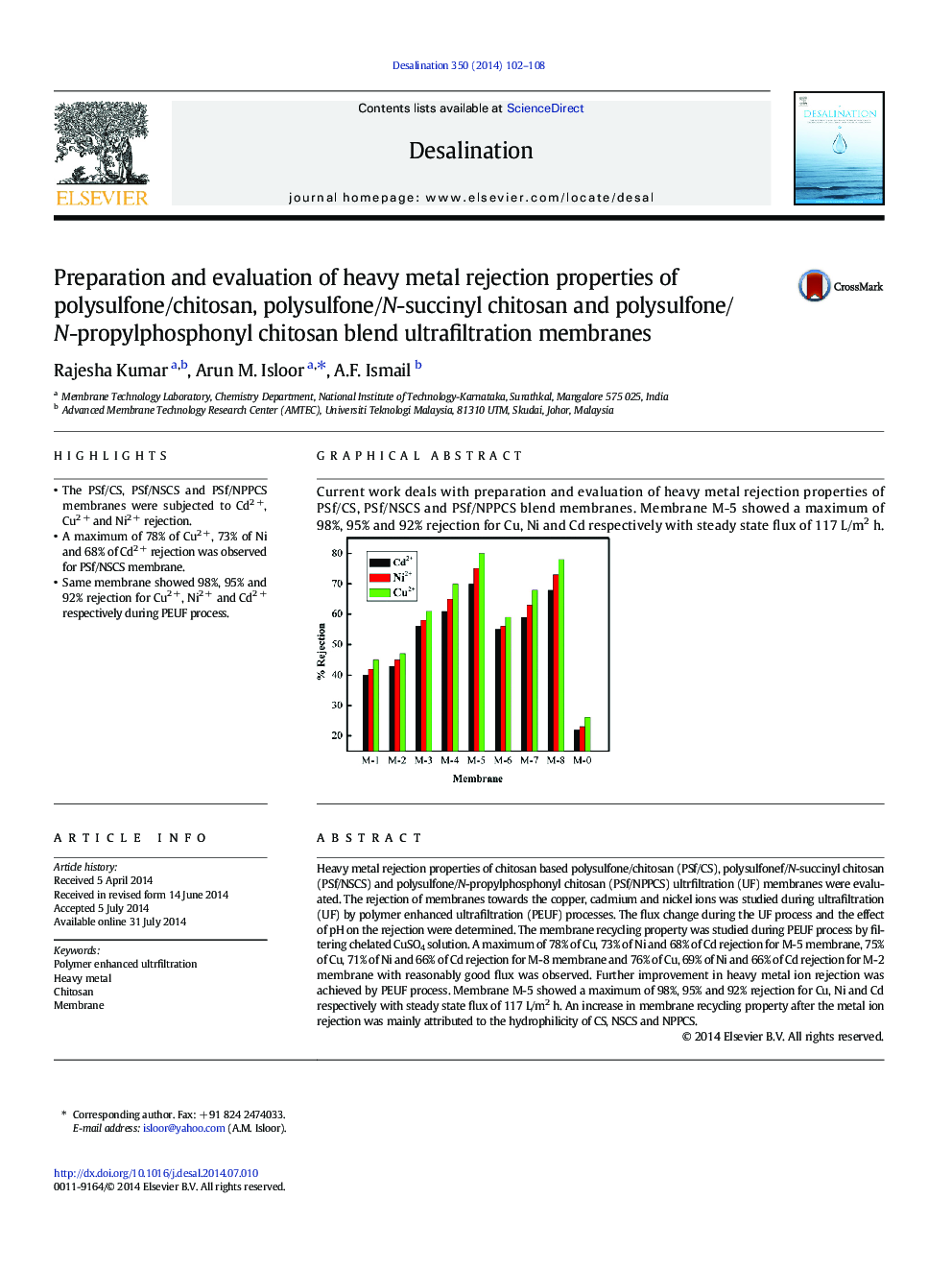| Article ID | Journal | Published Year | Pages | File Type |
|---|---|---|---|---|
| 623377 | Desalination | 2014 | 7 Pages |
•The PSf/CS, PSf/NSCS and PSf/NPPCS membranes were subjected to Cd2 +, Cu2 + and Ni2 + rejection.•A maximum of 78% of Cu2 +, 73% of Ni and 68% of Cd2 + rejection was observed for PSf/NSCS membrane.•Same membrane showed 98%, 95% and 92% rejection for Cu2 +, Ni2 + and Cd2 + respectively during PEUF process.
Heavy metal rejection properties of chitosan based polysulfone/chitosan (PSf/CS), polysulfonef/N-succinyl chitosan (PSf/NSCS) and polysulfone/N-propylphosphonyl chitosan (PSf/NPPCS) ultrfiltration (UF) membranes were evaluated. The rejection of membranes towards the copper, cadmium and nickel ions was studied during ultrafiltration (UF) by polymer enhanced ultrafiltration (PEUF) processes. The flux change during the UF process and the effect of pH on the rejection were determined. The membrane recycling property was studied during PEUF process by filtering chelated CuSO4 solution. A maximum of 78% of Cu, 73% of Ni and 68% of Cd rejection for M-5 membrane, 75% of Cu, 71% of Ni and 66% of Cd rejection for M-8 membrane and 76% of Cu, 69% of Ni and 66% of Cd rejection for M-2 membrane with reasonably good flux was observed. Further improvement in heavy metal ion rejection was achieved by PEUF process. Membrane M-5 showed a maximum of 98%, 95% and 92% rejection for Cu, Ni and Cd respectively with steady state flux of 117 L/m2 h. An increase in membrane recycling property after the metal ion rejection was mainly attributed to the hydrophilicity of CS, NSCS and NPPCS.
Graphical abstractCurrent work deals with preparation and evaluation of heavy metal rejection properties of PSf/CS, PSf/NSCS and PSf/NPPCS blend membranes. Membrane M-5 showed a maximum of 98%, 95% and 92% rejection for Cu, Ni and Cd respectively with steady state flux of 117 L/m2 h.Figure optionsDownload full-size imageDownload as PowerPoint slide
